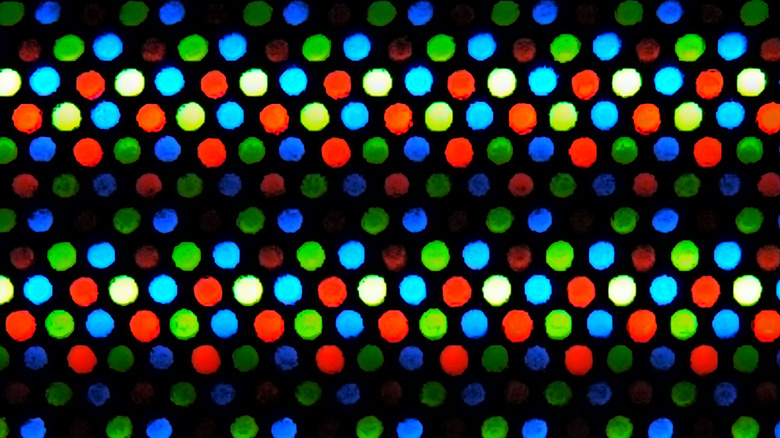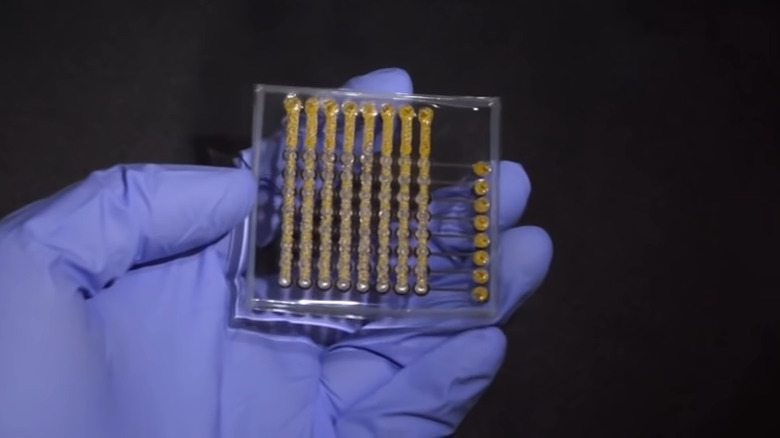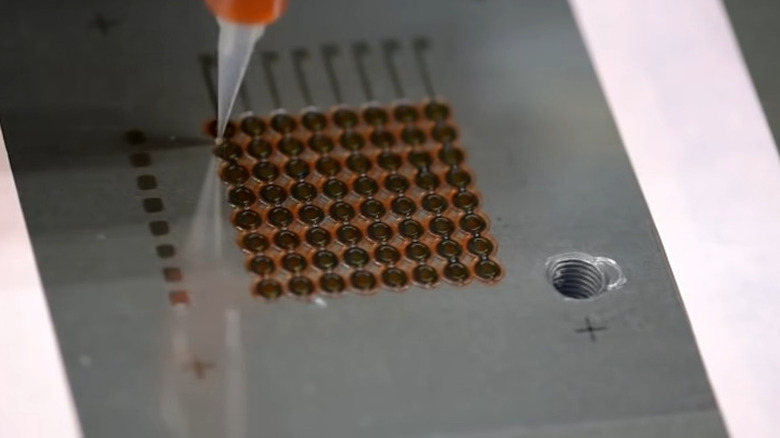How 3D-Printed OLEDs Could Change The Tech Game Forever
3D-printed flexible OLED screens might sound like something out of a science fiction story. But this year, they became a reality when researchers printed a functional prototype from scratch, per University of Minnesota Twin Cities. The breakthrough can have far-reaching effects on the tech industry. We could print our own screens, dramatically cutting the eye-watering costs of premium OLED displays. Novel form factors (a hardware design standard) and soft electronics are also in the cards.
And this future is coming sooner than most would expect. Working out of the University of Minnesota, Professor Michael McAlpine's research team fabricated the screen on a custom 3D printer. It's a small 1.5-inch flexible OLED with an 8x8 grid of 64 pixels (via Science Advances.) The technology is still in its embryonic stages because the grid needs millions of pixels before it can compete with modern 8K OLED TVs. But the team is confident that consumer-ready DIY monitors are only a few years away.
How it's made
From the world's first 3D-printed eye to circuits made by NASA, 3D printing is at the forefront of cutting-edge tech. So it's no surprise that the McAlpine group isn't the first to take a crack at 3D-printed OLEDs. Other researchers have attempted to 3D print displays with limited success (via UMN Twin Cities.) They only partially printed their versions because the previous methods relied on thermal evaporation or spin-coating techniques.
The University of Minnesota team, on the other hand, manufactured all six layers of the flexible OLED with 3D printing. The process is split into two modes: extrusion printing and spray printing (via Science Advances.) It requires some technical know-how to grasp it. But in a nutshell, an OLED is a stack of thin organic layers sandwiched between conducting material. The extrusion process creates the insulation, electrodes, and such, while spray printing deposits those layers. The result is a fully 3D-printed OLED that can withstand being bent more than 2000 times.
It also makes light emission uniform across the panel (a problem the researchers had come up against before.)
DIY OLEDs are coming
As impressive as this breakthrough is, the technology in its current form is far from commercially viable. But it's not expected decades down the road either. "It is not hard to imagine that you could translate this to printing all kinds of displays ourselves at home or on the go within just a few years, on a small portable printer," McAlpine predicted in the Twin Cities research brief.
The next step would be upping the brightness levels and improving resolution. But perhaps the most colossal challenge is making the custom 3D printer accessible and portable. It currently costs almost 100 thousand dollars. Plus, it takes longer than 24 hours to print and test the prototypes (via Science Advances.)
But once they're solved, the potential applications of this tech range from wearable gadgets and stretchable soft electronics to TVs, laptops, monitors, and custom screens. The OLED manufacturing operations demand highly-sterile environments and specialized equipment, which contribute to the high prices of OLEDs. If all goes according to McAlpine's plans, DIY screens and self-repair of damaged displays will become a cheaper alternative.


